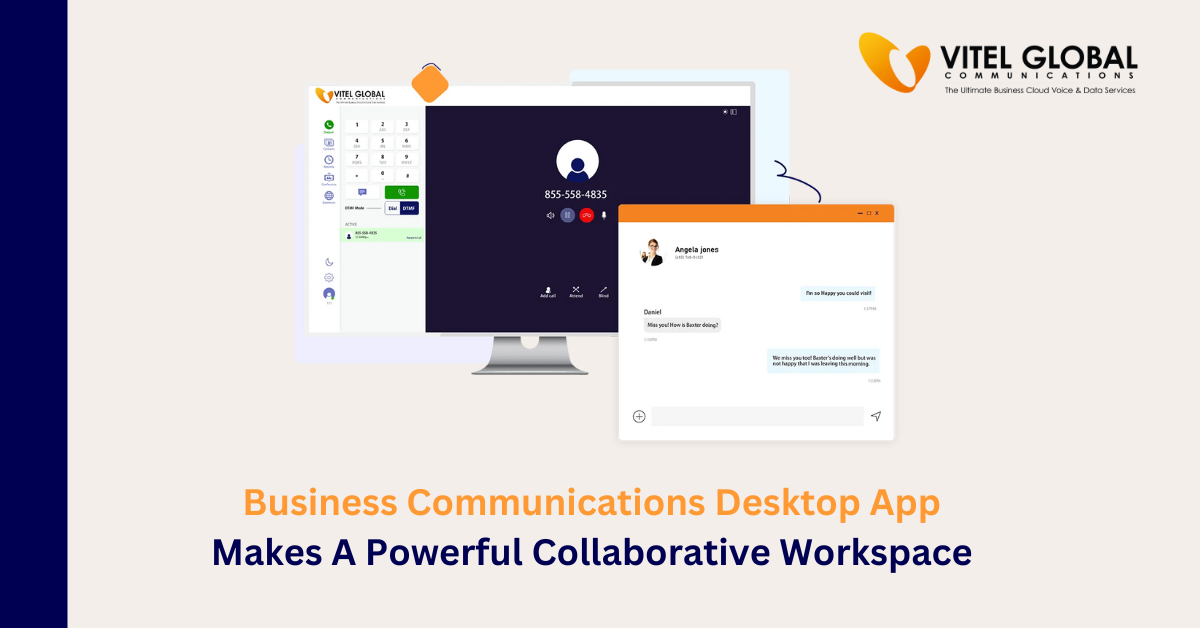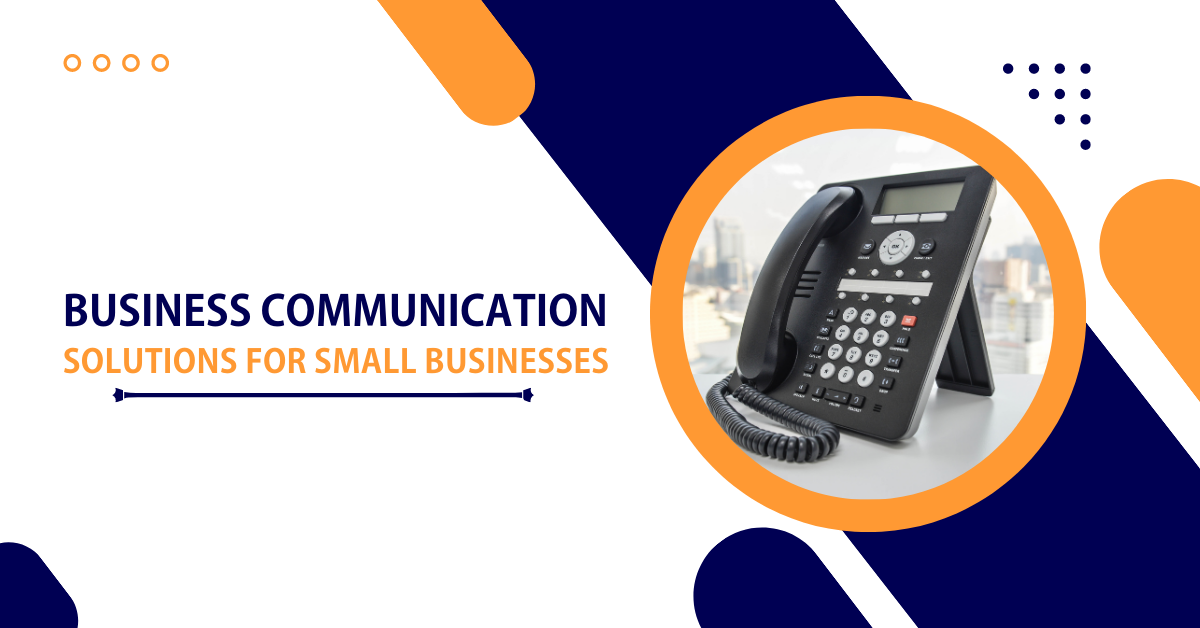Overcoming Collaboration Challenges at Workplace with UCaaS

5 min read
Whether you’re working in a traditional office setting or remotely, an effective business communications services ensures productivity and innovation. However, despite its importance, collaboration can sometimes present challenges that hinder efficiency and teamwork. From communication barriers to technological limitations, these challenges can impede progress and affect overall performance.
Understanding Collaboration Challenges
A Lack of Communication
Effective collaboration relies heavily on clear and frequent communication among team members. When communication is lacking, it can lead to misunderstandings, duplication of work, and missed deadlines. This challenge can arise due to various reasons such as ineffective communication channels, cultural or language barriers, or simply the absence of a culture that prioritizes communication.
Addressing this challenge involves establishing open channels for communication, encouraging regular updates and check-ins, and providing training or resources to improve communication skills if necessary.
Differing Priorities and Goals
Team members may have different priorities or goals, stemming from their individual roles, departmental objectives, or personal career aspirations. Misalignment in priorities can make it challenging to align efforts and work together towards a common objective.
To address this challenge, it’s crucial to establish clear goals and expectations at the outset of a collaboration effort, facilitate discussions to align individual goals with the overarching objectives, and ensure ongoing communication to adjust priorities as needed.
Conflicts and Personality Clashes
Differences in personalities, work styles, or opinions can lead to conflicts within a collaborative team. These conflicts, if not managed effectively, can escalate and disrupt productivity and morale. Resolving conflicts in a constructive manner involves fostering a culture of respect and open communication, providing conflict resolution training or resources, encouraging empathy and understanding among team members, and addressing conflicts promptly and transparently.
Unequal Participation
In some cases, certain team members may contribute more or less than others, leading to feelings of resentment or imbalance within the group. It’s important for all members to feel valued and actively engaged in the collaboration process.
Addressing unequal participation requires identifying the root causes, providing support or resources to help individuals contribute effectively, redistributing tasks or responsibilities as needed, and fostering a culture of accountability and recognition for contributions.
Coordination across Time Zones and Locations
Collaboration becomes more complex when team members are spread across different time zones or physical locations. Scheduling meetings, coordinating work, and maintaining communication can become more challenging in such scenarios. To address this challenge, it’s essential to leverage technology and tools that facilitate remote collaboration, establish clear guidelines for communication and availability, accommodate different time zones when scheduling meetings, and promote flexibility and adaptability in work processes.
Technology Barriers
Dependence on technology for collaboration can introduce its own set of challenges, such as technical glitches, compatibility issues, or learning curves associated with new tools and platforms. To overcome these barriers, it’s important to select appropriate tools and platforms that meet the needs of the team, provide training and support to help team members navigate technological challenges, establish backup plans in case of technical failures, and continuously evaluate and adapt technology solutions as needed.
Lack of Trust
Trust is essential for effective collaboration. When team members don’t trust each other’s abilities, intentions, or reliability, it can hinder collaboration and create barriers to sharing ideas and feedback openly.
Building trust requires fostering a culture of transparency, integrity, and accountability, demonstrating competence and reliability through consistent actions, actively listening to and valuing the perspectives of others, and addressing any breaches of trust promptly and transparently.
Resource Constraints
Limited resources, whether it’s time, budget, or manpower, can pose challenges for collaborative projects, as team members may need to find creative solutions to accomplish their goals within constraints. To address resource constraints, it’s important to prioritize tasks and allocate resources effectively, identify and leverage available resources or alternative solutions, communicate openly about resource limitations and potential impacts on project outcomes, and encourage innovation and collaboration to overcome obstacles.
When it comes to fostering collaboration within your team, relying solely on tools like email and spreadsheets can often lead to feelings of isolation and inefficiency. Long email chains can easily result in missed communications or individuals being left out of important discussions. It’s essential to provide your team with the appropriate tools to facilitate effective collaboration.
Choosing the right collaboration software is key. Take the time to assess your team’s specific needs and consider factors such as functionality and ease of use before committing to a solution. With Vitel Global you won’t have to worry about this issue. Our comprehensive business communications platform offers a suite of features designed to promote seamless collaboration. From face-to-face meetings to innovative sharing capabilities, business phone solutions empower your team to work together efficiently from anywhere, with streamlined workflows that enhance productivity.
So, addressing these challenges of collaboration requires proactive communication, establishing clear goals and expectations, fostering a culture of trust and respect, and leveraging appropriate tools and resources to support collaboration efforts. By actively addressing these challenges, teams can enhance their collaboration effectiveness and achieve better outcomes.
Here Are Some Advantages of Good Collaboration
Enhanced Creativity and Innovation
Collaboration brings together diverse perspectives, skills, and experiences, fostering creativity and innovation. When individuals collaborate, they can brainstorm ideas, challenge assumptions, and generate novel solutions to complex problems. By combining different viewpoints and approaches, collaborative teams can explore unconventional solutions and push the boundaries of what’s possible.
Improved Problem-Solving
By pooling together their expertise and resources, collaborators can tackle challenges more effectively. Different team members may offer unique insights or approaches, leading to more comprehensive problem-solving strategies. Collaborative problem-solving allows for a broader exploration of potential solutions and encourages experimentation to find the most effective ones.
Increased Productivity
Collaborative teams can accomplish tasks more efficiently by dividing workloads, leveraging each other’s strengths, and streamlining processes. This can lead to higher productivity levels and faster project completion times. Additionally, collaboration fosters a sense of accountability and responsibility among team members, motivating them to meet deadlines and deliver high-quality work.
Better Decision-Making
When multiple stakeholders are involved in decision-making processes, decisions are often more well-rounded and informed. Collaborators can weigh different perspectives, consider various options, and arrive at consensus-based decisions that are more likely to be successful. This inclusive approach to decision-making also promotes transparency and buy-in from all team members.
Enhanced Learning and Skill Development
Collaboration provides opportunities for individuals to learn from each other, share knowledge, and develop new skills. Working closely with others can expose team members to different techniques, best practices, and approaches, facilitating continuous learning and growth.
Collaborative environments encourage knowledge sharing and mentorship, allowing individuals to expand their expertise and capabilities.
Increased Accountability
In collaborative environments, team members hold each other accountable for their contributions and commitments. This helps to ensure that everyone remains focused and motivated to achieve shared goals. Clear roles and responsibilities, coupled with open communication channels, promote a sense of ownership and accountability within the team.
Stronger Relationships
Collaboration fosters a sense of camaraderie and teamwork among participants, leading to stronger interpersonal relationships and higher morale. When individuals feel valued and supported within a collaborative team, they are more likely to be engaged and committed to the group’s success. Positive team dynamics and a supportive work environment contribute to overall job satisfaction and employee retention.
Greater Adaptability and Resilience
Collaborative teams are often more adaptable and resilient in the face of challenges or changes. By working together, team members can quickly adjust to new circumstances, overcome obstacles, and navigate uncertainties more effectively. Collaboration encourages flexibility, agility, and a willingness to adapt strategies as needed to achieve desired outcomes.
Overall, good collaboration can lead to numerous benefits for individuals, teams, and organizations, ultimately contributing to improved performance and success. It fosters a culture of cooperation, creativity, and continuous improvement, driving innovation and achieving shared objectives effectively.
Conclusion
Overcoming collaboration challenges is essential for reaching your workplace easily and achieving success in today’s interconnected world. By addressing communication barriers, technological limitations, cultural differences, lack of trust, and time zone challenges, teams can foster a collaborative environment where innovation thrives and productivity rises.
Unified communication as a service platform streamlines and expedites communication with team members, offering a convenient all-in-one solution. Choose between phone calls, video chats, or instant messaging to suit your specific needs.
Published: August 14th, 2020
Subscribe to Our Latest Updates
Get monthly product and feature updates, the latest industry news, and more!







